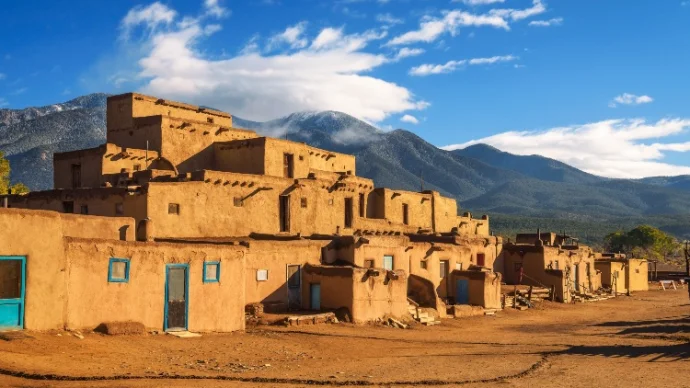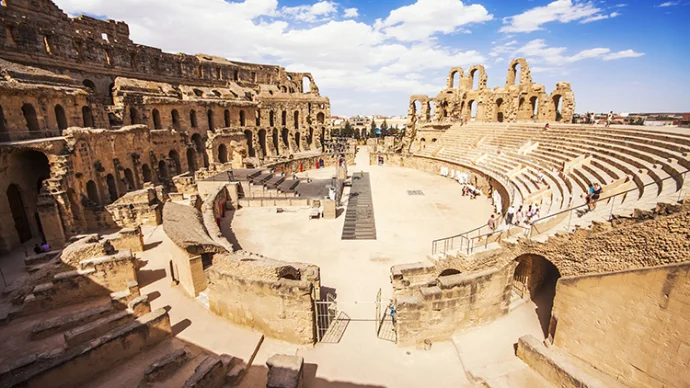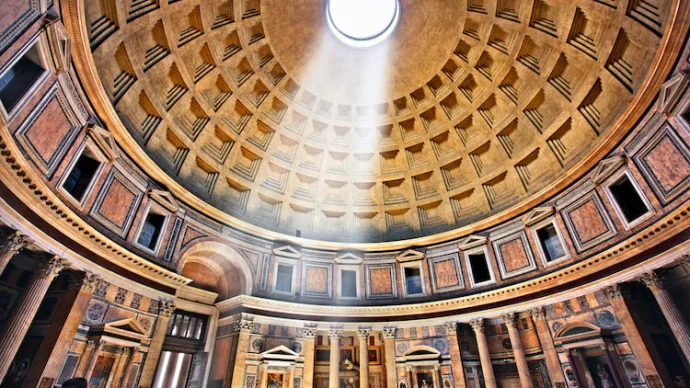
About Carthage
Carthage in North Africa was one of the most powerful cities of the ancient world, spawning the powerful Carthaginian Empire which dominated much of the western Mediterranean as an important – and resultantly affluent – trading hub.
Today, the extensive ruins of this famed city can be found on the outskirts of modern day Tunis.
Carthage history
Carthage itself was central to the history of the ancient world. Legend states that the city was founded by the Phoenician Queen Dido in the 9th Century BC and the ancient metropolis certainly rose to prominence over the next 500 years.
However, three long and brutal wars with Rome, known as the Punic Wars, eventually led to the downfall and destruction of Carthage in 146 BC. It is even said the Romans salted the earth so nothing more could live on the site of the once-dominant city.
Having destroyed the Carthaginian Empire, the Romans later realised the potential in the strategic location of the site. In the 1st Century AD they re-founded Carthage and it grew to become one of the most important cities of the Roman Empire.
As Rome’s power waned, Carthage was briefly captured by the Vandals in the 5th Century AD before Byzantine forces re-took the city. In 698 AD, after many years of hard fighting the city was finally captured by the forces of the Umayyad Caliphate who founded the new city of Tunis nearby, leaving the ancient metropolis to fade into history.
Carthage today
Time has significantly taken its toll on the site and little remains of ancient Carthage today are spread over quite a broad area. The best way to begin exploring these ruins is probably by visiting Byrsa Hill and the Carthage Museum. The museum hosts a collection of Carthaginian (Punic) and Roman artefacts including marble sarcophagi and an impressive model of Punic Carthage which helps you envisage the ancient city.
Other key points of interest include the impressive Antonine Baths, the Roman Amphitheater, Roman villas and reconstructed Roman theatre of Carthage. Among the best preserved Punic remains are the Magon Quarter, Punic Port and unnerving Sanctuary of Tophet. After exploring the remains, be sure to pause and admire the stunning coastal views across the Mediterranean.
Additionally, you can explore all the sites of Carthage on our Carthage Sites Map feature.
Getting to Carthage
Along the N9 road towards the coast from Tunis, Carthage is reached by car in around 20 minutes. Although an easy alternative of reaching Carthage from central Tunis is via local transport. The TMG light railway Carthage-Byrsa station is within the ancient site, and there is a daily service running from the early morning until midnight.
Featured In

Ancient Cities to Visit
Discover ancient history: these 15 metropolises, from the ruins of Pompeii to the mountainous Machu Picchu, are must-visit relics of the ancient world.

Ruins of Ancient Carthage
Explore the history of the ancient Carthaginian Empire at these important ruins and relics across the Mediterranean.

Tunisia Historic Sites
From ancient city ruins telling the story of battling empires to mysterious graveyards that puzzle historians, explore the best historic sites Tunisia has to offer.

Roman Temples
Discover incredible Roman temples you can still visit today, from Baalbek to the Pantheon and more, includes an interactive map of surviving temples from ancient rome.




















